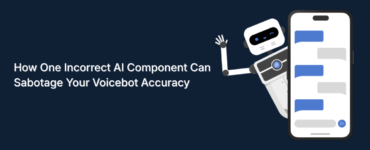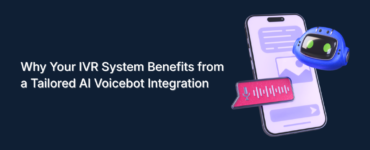In today’s fast-changing digital world, 72% of businesses aim to improve operational efficiency. Many also seek to reduce team workload and cut rising costs. AI Agent Interoperability supports this shift with measurable impact. Studies show that connected AI agents can boost workflow speed by 40%. They also help reduce manual efforts by up to 35%. With AI Agent Interoperability, multiple agents communicate and coordinate smoothly. They work across systems, tools, and workflows to deliver faster and more accurate results.
As companies adopt more AI-driven solutions, the real power lies not just in individual AI tools, but in how effectively these tools can collaborate. When AI agents are connected, aligned, and capable of interacting with one another, work becomes dramatically faster, smoother, and more cost-effective. This article explores how AI Agent Interoperability enhances business productivity, strengthens automation, and unlocks significant financial and operational value.
The Need for Connected AI Agents in Modern Workflows
Businesses today operate within complex digital environments that include CRMs, data platforms, communication tools, cloud services, and hundreds of distributed software systems. Managing these systems manually—or relying on isolated AI tools—creates inefficiencies and slows down internal processes.
AI Agent Interoperability solves this problem by enabling different AI agents to seamlessly exchange information and carry out tasks collaboratively. Instead of functioning as separate units, these agents form an interconnected ecosystem where each AI component supports the others, resulting in faster decisions, better accuracy, and higher output with less human involvement.
This shift from isolated AI solutions to connected AI environments is transforming the way businesses manage workflows, serve customers, and optimize their operations.
How AI Agent Interoperability Makes Work Faster
When AI agents communicate with each other, workflows that previously required multiple steps and human oversight can be automated from end to end. Speed becomes a natural outcome of seamless coordination.
For example, a customer support inquiry can be handled instantly when one AI agent retrieves customer data, another analyzes sentiment, and a third drafts or delivers the response. Without interoperability, these actions would require manual transfers between systems or teams.
Connected AI agents also reduce delays caused by system switching, data misalignment, and human bottlenecks. Because they share data in real time, decisions are made instantly, and tasks are executed without pause. This leads to shorter processing times, accelerated responses, and much faster operational performance across the entire organization.
How Connected AI Agents Reduce Operational Costs
Cost efficiency is one of the most significant benefits of AI Agent Interoperability. When AI tools work together, businesses save money by reducing the need for manual intervention, cutting repetitive work, and minimizing errors that lead to operational waste.
Interoperable AI agents eliminate redundant tasks, streamline complex workflows, and reduce the number of human agents required for routine processes. This lowers labor expenses and minimizes training or onboarding costs, especially in environments where operations change frequently.
Additionally, connected AI reduces the need for multiple overlapping software tools. Instead of purchasing new systems for each business function, companies can build an integrated AI ecosystem that leverages existing platforms—resulting in substantial long-term cost savings.
By automating a higher percentage of work with coordinated AI agents, businesses achieve much faster ROI and improve their profitability.
The Role of Automation in Improving Business Efficiency
Automation becomes more intelligent and powerful when AI agents work as a unified team rather than as individual components. With AI Agent Interoperability, automated workflows expand beyond simple tasks and begin to cover complex, multi-step processes that require reasoning, context awareness, and data sharing.
This enables companies to automate entire operations such as customer support journeys, financial processing, data analysis, product recommendation systems, vendor management, and many more. Connected AI agents can execute tasks more accurately than humans, reducing mistakes that often lead to compliance issues or revenue losses.
By eliminating repetitive and time-intensive processes, teams gain more time to focus on strategic activities such as innovation, customer relationships, and high-value decision-making—ultimately boosting business performance at every level.
Improved Customer Experience Through Connected AI Agents
Customer experience becomes dramatically better when AI agents work together behind the scenes. Instead of transferring customers between departments or tools, AI can deliver seamless, unified interactions.
For example, an AI agent can greet a customer, understand their request, query databases, access CRM details, evaluate past interactions, and deliver a personalized solution—all within seconds. When multiple AI components collaborate, the experience feels smooth, intelligent, and cohesive.
This reduces waiting time, eliminates frustration, and ensures customers receive accurate information without being bounced around. As a result, customer satisfaction increases, brand loyalty strengthens, and customer service costs decline.
Creating a Scalable and Future-Proof AI Ecosystem
Another major advantage of AI Agent Interoperability is scalability. As a business grows, it may add new AI tools, third-party platforms, or advanced functionalities. With interoperable AI agents, integrating new components becomes easy and cost-effective.
Instead of rebuilding workflows from scratch, businesses can expand their AI network and allow new agents to join the existing system. This flexible architecture ensures the organization stays agile, competitive, and ready for future advancements in automation and artificial intelligence.
Connected AI agents also help maintain data consistency and workflow stability, making it easier to scale operations without losing efficiency or increasing workload.
Conclusion
AI Agent Interoperability is redefining how modern businesses operate. By allowing AI agents to collaborate and communicate seamlessly, organizations can dramatically speed up their workflows, reduce operational costs, improve customer satisfaction, and create a scalable ecosystem that grows with their needs.
Connecting AI agents doesn’t just automate work—it transforms the entire operational structure of a business, unlocking new levels of productivity and efficiency. Companies that adopt this interconnected AI approach today will gain a substantial competitive advantage and be far better prepared for the future of digital transformation.
Frequently Asked Questions (FAQs) About AI Agent Interoperability
1. What is AI Agent Interoperability?
AI Agent Interoperability refers to the ability of multiple AI agents to communicate, collaborate, and share data across different systems and applications. This coordination allows them to work together efficiently and complete tasks that normally require human involvement.
2. How does AI Agent Interoperability make work faster?
By enabling AI agents to exchange information instantly and execute tasks in parallel, processes that typically take minutes or hours can be completed in seconds. This eliminates delays, reduces manual handoffs, and significantly speeds up decision-making.
3. Can connecting AI agents help reduce business costs?
Yes. When AI agents work together, many repetitive and time-consuming tasks can be fully automated, reducing the need for manual labor. This lowers operational expenses, decreases error-related costs, and minimizes the need for additional software tools.
4. What kinds of workflows benefit most from connected AI agents?
Workflows that involve multiple systems—such as customer support, data processing, analytics, onboarding, billing, and task management—benefit greatly. Interoperable AI agents can handle multi-step processes smoothly without human intervention.
5. Is AI Agent Interoperability difficult to implement?
Implementation depends on existing systems, but many modern platforms support easy integration. With the right architecture or middleware, businesses can connect AI agents without major disruptions and gradually expand their interoperable AI ecosystem.
6. How does AI Agent Interoperability improve customer experience?
Connected AI agents allow for quicker responses, personalized interactions, and smoother service journeys. They can access customer data, analyze intent, and provide accurate solutions instantly, resulting in a better and more efficient customer experience.




